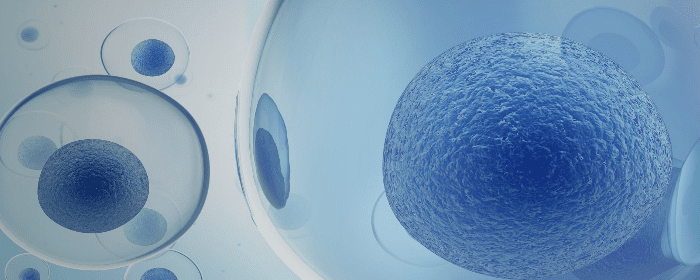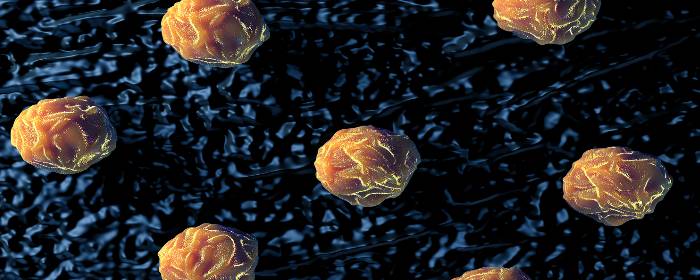
by admin | May 9, 2024 | Adipose, Bone Marrow
Stem cell therapy has been increasingly used as a therapeutic option in the treatment of numerous diseases, including many inflammatory and vascular diseases.
The primary sources of stem cells are bone marrow (BM), dental tissue, adipose tissue, and umbilical cord blood; BM is considered the primary source of multipotent stem cells. While BM is an important source of stem cells for clinical cellular therapy, BM cell culture is an invasive procedure that presents both a potential risk and burden to patients.
Considering this, researchers have conducted numerous studies to investigate adipose tissue as an alternative to BM. Findings indicate that adipose-derived stem cells (ADSCs) can be expanded ex vivo and possess characteristics similar to those found in BM. However, the quality of ADSCs have been found to be affected by age, underlying disease, or the lifestyle of the individual, making these factors a critical factor in estimating the efficacy of stem cell therapy.
The purpose of Park et al.’s study was to explore the association between age and ADSC activity, including paracrine and differentiation potential; the authors hypothesized that age affects the cellular activity of ADSCs.
To verify this hypothesis, Park et al. analyzed the essential functions of ADSCs from young and elderly donors by evaluating the cell proliferation rate, differentiation potential, and cytokine profile.
As a result of this study, the authors reported that age reduces the viability and proliferation rate of ADSCs. Specifically, the viability of ADSCs was significantly reduced in the elderly group when compared to the young group; this reduction also led to an increase in cell population doubling time. This finding led to the conclusion that ADSCs from the elderly may lose their therapeutic efficacy during ex vivo culture.
Paracrine action of ADSCs was also found to be altered by age. The authors observed that as stem cells age, they tend to lose their ability to secrete cytokines or growth factors due to senescence. Considering that transplanted stem cells primarily act through paracrine factors, reduced function resulting from age could be a critical factor in predicting their treatment efficacy after transplantation.
Age was also found to weaken the differentiation potential of ADSCs. Age had previously been proven to influence cell repopulation rate and cytokine secretion. The authors suggest that these findings also indicate that age may disrupt the differentiation potential of ADSCs. After testing this as part of this study, the authors reported that ADSCs from the elderly group do in fact demonstrate a significant reduction in adipogenic potential when compared to the young group.
The authors conclude that this study demonstrated that a donor’s age affects the proliferative activity, paracrine action, and differentiation potential of ADSCs and that further evaluation of ADSC based on age will be helpful for the development of ADSCs as a cellular therapeutic agent in stem cell therapy.
Source: “Age affects the paracrine activity and differentiation potential … – NCBI.” 22 Dec. 2020, https://www.ncbi.nlm.nih.gov/pmc/articles/PMC7789087/.

by Stemedix | Apr 22, 2024 | Age Management, Bone Marrow, Health Awareness, Osteoarthritis, Pain Management, Regenerative Medicine, Stem Cell Research, Stem Cell Therapy
As the human body ages, most people assume that “wear and tear” will take over and deplete their health. This isn’t always true, and it’s important to separate fact from fiction when discussing joint health problems.
Osteoarthritis is a painful, inflammatory joint condition that can make it difficult to function. Some folks refer to it as “just” arthritis, but this minimizes the incredible discomfort and damage it causes. Living with this condition can feel impossible at times.
You don’t have to sit back and let joint health problems take over your life as you age. Learn more about osteoarthritis so you can make the best decisions for your health and pain management.
Developing Osteoarthritis: What’s Happening to Your Joints?
Before you can appropriately manage this condition, you must learn what’s happening in your joints. Developing osteoarthritis is not inevitable, but unfortunately, it is common, especially in aging adults.
What Is Osteoarthritis?
Osteoarthritis is an inflammatory joint condition that occurs when the cartilage that supports and connects your bones wears away. As a result, your bones grind together, and the spaces around your joints become inflamed and tender.
Is This Condition Inevitable?
No. Osteoarthritis is not just a “normal” part of aging, nor is it inevitable. As science and research advance, it’s becoming more obvious that osteoarthritis is the result of many risk factors interacting with each other.
Certain risk factors make it more likely that you’ll develop osteoarthritis. Many of them are preventable through lifestyle changes and a proactive approach to protecting your joints.
Who Gets Osteoarthritis?
Age is a big risk factor for osteoarthritis, but again, this condition is not inevitable. Here are some of the risk factors for developing osteoarthritis.
Stress, Strain, and Injury
Any type of strain or stress on your joints can lead to osteoarthritis later in life. Even if your joints feel fine when you’re younger, you’re still at risk if you’ve experienced harsh impacts or prolonged joint strain.
Sports injuries, obesity or being overweight, and physically demanding jobs all put you at a higher risk of developing osteoarthritis. All these risk factors slowly degrade the cartilage between your bones. These tissues can only support lots of impact, weight, or use for so long.
Genetics and Sex
Your genetics play a role in whether you develop joint health problems. Having a family history of osteoarthritis raises your chances of dealing with the same condition.
An estimated 60% of osteoarthritis patients are women. This means that if you were assigned female at birth, you’re at a slightly increased risk of developing osteoarthritis. However, through a healthy lifestyle, you may be able to prevent it.
The Silent Pain of Living with Arthritis
To the outside world, you might appear healthy and fully capable of living your daily life as normal. However, arthritis pain can stop you in your tracks. It can be intense or even disabling.
If your condition gets bad enough, you might find yourself unable to walk around, twist, or pick things up. Osteoarthritis pain is not something to ignore or minimize.
Swelling and Inflammation
The inflammation doesn’t just happen inside your body. Sometimes, your joints may become swollen, tender, and visibly inflamed. When this happens, chances are you can’t move the affected joints much. Any impact, no matter how slight, may throw you into a pain flare.
Crepitus
Some osteoarthritis patients experience a crunching or grinding sensation (crepitus) when moving the affected joints. This can be terrifying and uncomfortable, leading to increased mental stress and physical pain.
Weakness and Limited Mobility
Osteoarthritis causes muscle weakness, fatigue, and limited mobility. You might not be able to move your body in ways that feel good to you or allow you to keep up with others anymore. These limitations not only affect you physically, but they also come with a mental price tag as well.
Stigma and Shame Around Aging
Some people might feel like their osteoarthritis symptoms mean they’re “getting old.” While there should be no shame in aging, social stigmas suggest otherwise. Experiencing these symptoms might make you feel embarrassed about your age.
If you struggle with joint pain, others might not see what you go through. You might feel pressured to “just get over it” or take pain medication to keep up with everyone else. This can also create feelings of shame and contribute to a poor stigma around joint health problems.
Treating Osteoarthritis: Enjoy a Better Quality of Life
Getting an osteoarthritis diagnosis doesn’t mean you’ll never be able to enjoy life and movement again. With the proper therapies, especially early treatment, you can improve your comfort and quality of life. Here are some of the best options for treating osteoarthritis pain and inflammation.
Stem Cell Therapy
Stem cells are at the forefront of regenerative medicine. These cells, also known as “blank” or “programmable” cells, can develop into specialized tissues, like cartilage. This makes them useful for regenerating and healing wounds, damaged tissues, and inflamed areas of your body.
One advantage of stem cell therapy is that it’s drug-free and comes with almost no risks to your health.
Stem cell therapy may also reduce your pain and increase your mobility. It gets to the root cause of your joint problems instead of covering up the symptoms.
Exercise and Physical Therapy
Getting more movement in your day may help reduce the severity of your osteoarthritis symptoms. Regular physical activity prevents the painful stiffness that osteoarthritis patients often experience.
Exercise also assists in weight management, which is key to reducing your joint pain. Every extra pound of body fat adds about four times the amount of pressure onto your joints.
Whether you (gently) exercise on your own or enlist the help of a physical therapist, your joints will thank you for it.
Get the Proper Support for Your Osteoarthritis
Living with osteoarthritis can be challenging, but you’re not alone. There are steps you can take to improve your quality of life with this condition. Evaluate your treatment options to find what works best for you. Visit our website to learn more about osteoarthritis pain.

by Stemedix | Oct 25, 2021 | Bone Marrow, Stem Cell Therapy
Bone marrow is a vital biological resource used to treat people with diseases such as leukemia and lymphoma. In addition, it has been utilized for stem cell therapy, as bone marrow contains a large concentration of these valuable specialty cells. Once harvested, these stem cells can help treat conditions such as autoimmune conditions, orthopedic injuries, and neurodegenerative disease.
What Is Bone Marrow?
Bone marrow is gelatinous, soft tissue that fills the center of bones. There are two general types of bone marrow: myeloid tissue or red bone marrow and fatty tissue or yellow bone marrow.
Bone marrow contains capillaries, blood vessels, and stem cells in varying concentrations. Every day, the average person’s bone marrow produces roughly 220 billion blood cells. The majority of blood cells in the human body come from bone marrow, although some are produced by other sources.
Types of Bone Marrow Stem Cells
While there are two types of bone marrow, there are also two kinds of stem cells within that marrow. The first type of stem cells is called mesenchymal stem cells (MSCs). The second type is the hematopoietic stem cell.
Hematopoietic stem cells are found in the red bone marrow. These cells are blood-forming. MSCs are found in the yellow bone marrow and are alternatively known as marrow stromal cells. These stem cells are responsible for producing bone, cartilage, and fat.
Stem cells can transform into many different types of cells. As a result, providers and doctors use them to treat various medical conditions, including TBI, glaucoma, and osteoarthritis. While stem cell therapy is still being studied, many patients suffering from these conditions have experienced benefits from this treatment option.
What Is Bone Marrow Aspirate?
Bone marrow aspirate is the material removed from within bones. The process is known as bone marrow aspiration. Medical professionals must harvest bone marrow aspirate to perform specific tests and may also use it for stem cell therapy.
When using bone marrow aspirate for stem cell therapy, the medical staff will use a local anesthetic and the patient is awake for the procedure. They will then harvest the bone marrow from a large bone using a thin needle. The pelvis is the most common harvesting location because of its size and the abundance of stem cells it contains.
Once harvested, the stem cells are concentrated and then readministered to the targeted areas or near the point of injury. Over the next few weeks to a few months, the stem cells work to help stimulate the patient’s natural healing capabilities and have the potential to manage and improve symptoms. If you are interested in learning more about the potential benefits of stem cells, contact a Care Coordinator today!

by admin | Dec 17, 2020 | Bone Marrow, Mesenchymal Stem Cells, Stem Cell Research, Stem Cell Therapy
The ability for bone to naturally repair fractures and other common injuries have been well documented. However, research has consistently demonstrated that as they age, bone loses its ability to heal, repair, and fend off various bone diseases. In fact, each year, in the U.S. alone, there are over 2 million fragility-associated fractures with associated healthcare costs exceeding more than $20 billion dollars.
Currently, non-stem cell bone healing therapies including estrogen and related agonists, recombinant parathyroid hormone, supplements such as vitamin D and calcium exist, but with limitations and a number of potentially serious side effects.
Considering that the incidence of fracture and the associate rate of morbidity increase with age, current research is now examining other therapeutic options for the structural and functional restoration of bone, including the viability and of tissue engineering applications such as mesenchymal stem cells (MSCs) and bioscaffolding as potential solutions for the structural and functional restoration of bone.
Stem cells are generally used therapeutically in three distinct ways, including 1.) freshly isolated stem cells transplanted directly into tissue and undergo in vivo differentiation to become a desired cell type; 2.) the stem cell can be manipulated in vitro prior to being implanted; or 3.) circulating endogenous stem cells are recruited by cytokines to facilitate cell proliferation, migration, adhesion, and differentiation.
As researchers continue to explore using MSCs as part of therapeutic bone regeneration, it is generally accepted that MSC bone marrow density and quality decrease with age. In addition, a factor in determining the effectiveness of MSCs related to facilitating tissue repair is the ability for the stem cells to be directed to the site of injury, a process more commonly known as “homing”. A recent study using mice has demonstrated that MSCs appear to lose their homing ability rapidly while young MSCs demonstrate better homing ability, especially when compared to old MSCs. Considering this, future research must consider the age of both donor and recipient when determining the effectiveness of this strategy.
In addition to stem cells, bioscaffolds are also considered an essential component of the bone regeneration strategy, serving as the reservoir for multiple factors, the carrier for cells, the filler for the void space, and the template for bone regeneration. The ideal scaffold for bone tissue engineering has been identified as:
- Showing no local and systemic toxic effects to the host tissue
- Supporting normal cellular activity
- Allowing cell adhesion, proliferation, extracellular matrix deposition, and inducting new bone formation
- Prompting the formation of blood vessels after weeks of implantation.
Considering the above, several substrates have been identified as potential bioscaffolds to support improved regeneration of bone tissue, including decellularized extracellular matrix scaffolds, synthetic scaffolds (calcium phosphate-based bioactive ceramic scaffolds; metallic scaffolds (including metal scaffolds coated with growth factors and other bioactive factors); hybrid scaffolds combining two or more materials (metal-ceramic-poly hybrid scaffolds); natural and synthetic polymeric scaffolds; and nanomaterial-based scaffolds.
As research continues to explore the possibilities of new therapeutic approaches to bone healing provided through various tissue engineering applications, the use of MSCs and bioscaffolds continue to demonstrate potential benefits. Among the key areas requiring further study is the need to develop vascularization in engineered bone material. Bone and bone tissue has a rich vascular supply; while the recent study has demonstrated nanomaterials as having the potential to promote vascularization (without the aid of growth factors), further research and clinical trial are required.
Reference: (2018, June 22). Bone Marrow Mesenchymal Stem Cells: Aging … – NCBI – NIH. Retrieved December 18, 2020, from https://www.ncbi.nlm.nih.gov/pmc/articles/PMC6733253/

by admin | Dec 2, 2019 | ALS, Bone Marrow, Stem Cell Research, Stem Cell Therapy
Researchers have recently established that a hallmark of Amyotrophic Lateral Sclerosis (ALS) is endothelial cell degeneration that leads to vascular pathology. When this vascular pathology occurs, damage develops to the barrier between the blood and the central nervous system. Given this new understanding of the pathophysiology of ALS, researchers have begun looking at the potential of repairing this barrier as a strategy for treating the disease with bone marrow stem cells.
A recent study, published in Scientific Reports, addressed this issue by testing how human bone marrow cells may impact blood-spinal cord barrier repair by transplanting these cells in an ALS model. The researchers hypothesized that the cells should help to repair the barrier, reversing the damage accompanying ALS. They were also interested in whether this type of repair may improve not only the integrity of the barrier between the blood and central nervous system but also improve symptoms of ALS.
What the researchers found was that the human bone marrow cells differentiated into the type of endothelial cells that were needed for repair and successfully engrafted into the capillaries of the spinal cord in their model. Several specific observations led the scientists to conclude that these stem cells helped to effectively restore the barrier between the blood and the spinal cord.
The stem cells improved the integrity and survival of nervous system cells, including astrocytes and spinal cord motor neurons, preventing problematic changes in these cells that are associated with the breakdown of the blood-central nervous system barrier. Critically, the implantation of the stem cells also led to improvements in behaviors associated with ALS.
While there is still a lot of research to be done to establish whether bone marrow stem cells can help repair the blood-spinal cord barrier in patients with ALS, this study provides promising data. Given that there is no cure for ALS and limited treatment options, there is likely to be an emphasis on cell-based therapies for the disease. As more data become available, we will get a clearer picture as to if and how stem cells can help ALS patients.
Reference: Garbuzova-Davis,S. (2017). Endothelial and astrocytic support by human bone marrow stem cell grafts into symptomatic ALS mice towards blood-spinal cord barrier repair. Scientific Reports, 7(884).

by admin | Jul 19, 2019 | Bone Marrow, Mesenchymal Stem Cells, Multiple Sclerosis
Multiple Sclerosis is a disease of the nervous system that involves the demyelination of nerve cells. As nerve cells lose their myelination, it becomes harder for the cells to communicate with one another. Though there are a number of treatment options for multiple sclerosis, which usually involve immunosuppressants, the conventional treatments do not always work over the long-term and may be associated with unwanted side effects. Given the promising results of stem cells being used in treatments for other nervous system diseases, scientists have reasoned that stem cells could provide a valuable therapy for those with multiple sclerosis.
A recent study published in Cytotherapy has demonstrated for the first time the use of neural progenitors derived from bone marrow mesenchymal stem cells. According to the authors of the study, it has previously been recognized that these cells have the potential to help with multiple sclerosis therapy, whether they come from multiple sclerosis patients or those without multiple sclerosis. Preclinical research has also shown that the use of these stem cells can improve disease in multiple sclerosis models and lead to the recruitment of progenitors to sites of inflammation.
In the current study, scientists wanted to establish the safety and dosing of intrathecal neural progenitors derived from bone marrow mesenchymal stem cells in the treatment of multiple sclerosis and investigated the use of these cells in six patients with progressive multiple sclerosis who were not responding to conventional treatments. The patients were treated with between 2 and 5 injections of the stem cells, and they were evaluated for an average of 7.4 years following their first injection.
Not only were there no safety issues that arose with any of the treated patients, but 4 of the 6 patients demonstrated measurable clinical improvement through the use of stem cell treatment. The results of this pilot study provide support for both the tolerability and effectiveness of stem cell therapy for multiple sclerosis. Future research will help to clarify the specific protocols that may be used to achieve the desired results in this group of patients.
Reference: Harris, VK, Vyshkina, T, & Sadaiq, SA. (2016). Clinical safety of intrathecal administration of mesenchymal cell-derived neural progenitors in multiple sclerosis. Cytotherapy, 18(12), 1476-1482.







 St. Petersburg, Florida
St. Petersburg, Florida
